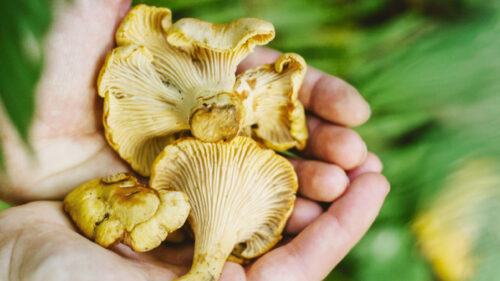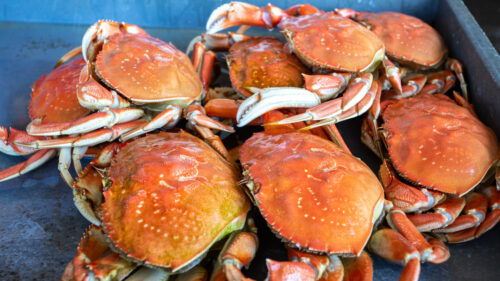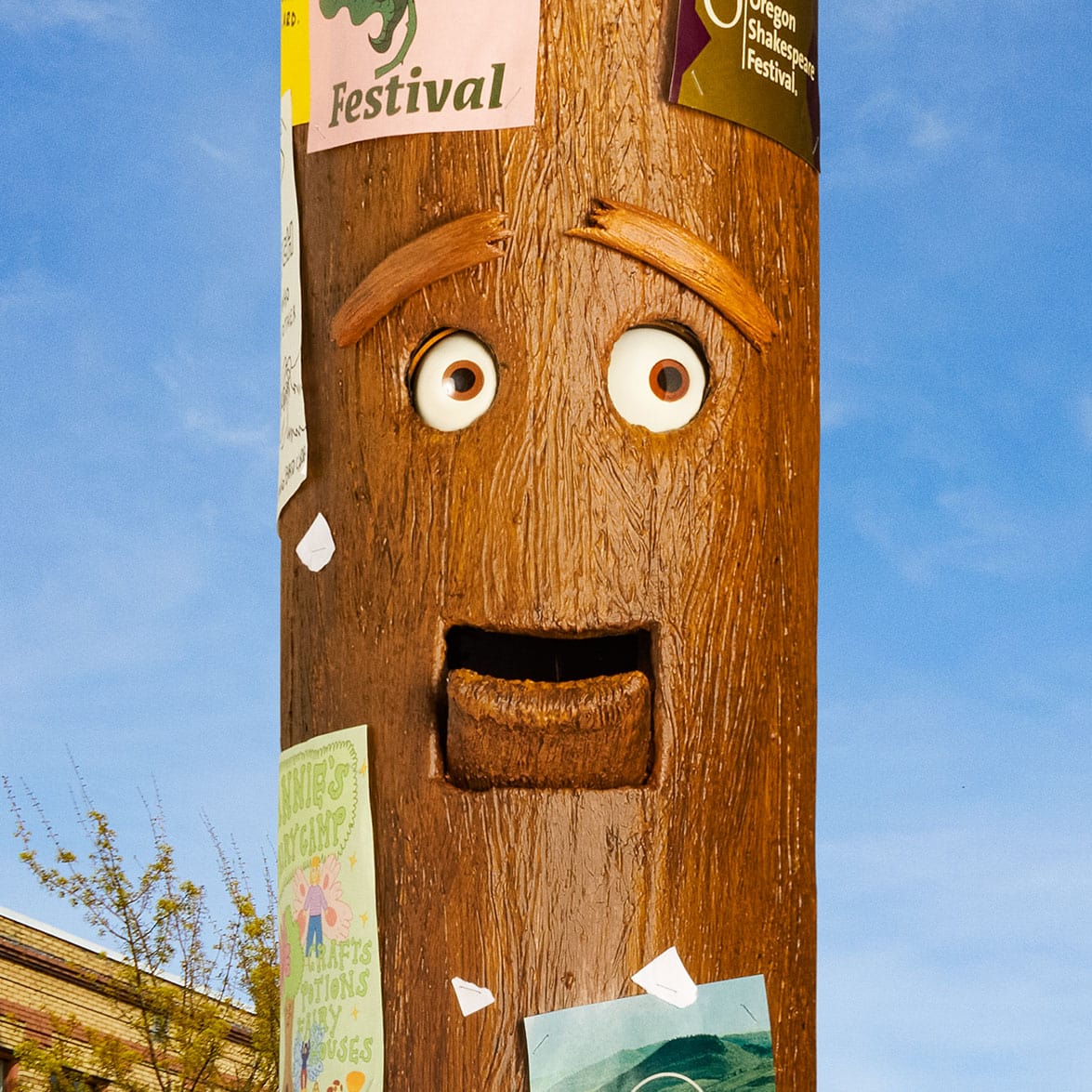Falling to his hands and knees, Cameron Rauenhorst excitedly peels back the shrubbery of a moss-covered hill to reveal a light-orange, button-shaped mushroom standing a few inches above the dirt. “Mushrooms love to hide,” he says. “It’s all about training your eyes to find that tiny hint of color.”
After 20 years of foraging for mushrooms along the Oregon Coast Range and a decade of leading educational programming for Oregon State Parks, Rauenhorst considers himself an amateur mycologist. Through his Coast-based tour group, Captain Clameron’s Excursions, Rauenhorst helps visitors discover the joys of activities like clamming, crabbing and agate hunting. But one of his fastest-growing tours is mushroom foraging.
“Out here, mushroom hunting in the Pacific Northwest is very special because we’re able to get out into these old-growth forests,” he says. “We’re able to slow down and enjoy nature.”
Oregon’s food scene is known for its creative meals made from high-quality ingredients sourced from local makers and growers. Some of those ingredients are hand-foraged — and that includes mushrooms. These tasty fungi give pizzazz to a number of dishes by adding an earthy, umami flavor — and they can be found around the state. While the challenge lies in discovering a consistent place to find these tasty treats (secrecy abounds in the foraging community), unearthing your own patch is a big part of the adventure. If you’ve never gone foraging for Oregon’s edible mushrooms, here are some basics for having a fun and safe time.
When to Go on a Mushroom Hunt
In Oregon, fall is the ideal season to go mushroom hunting, as this is the time of year when most of the edible-mushroom species fruit. This typically starts in late August and stretches to the end of November and sometimes into December. However, some mushrooms, such as morels, fruit in the spring, meaning the best time to find them is between March and May. The weather conditions are also an important factor in timing your excursion just right. Mushrooms grow and sprout just after rainfall, when the forest floor is soft and damp.
If you find mushrooms, don’t pick them when they’re very young, and never harvest all the mushrooms in a patch. Waiting until the mushrooms are big enough gives the mushrooms a chance to mature and leaving some behind allows them to drop spores to keep future generations going.
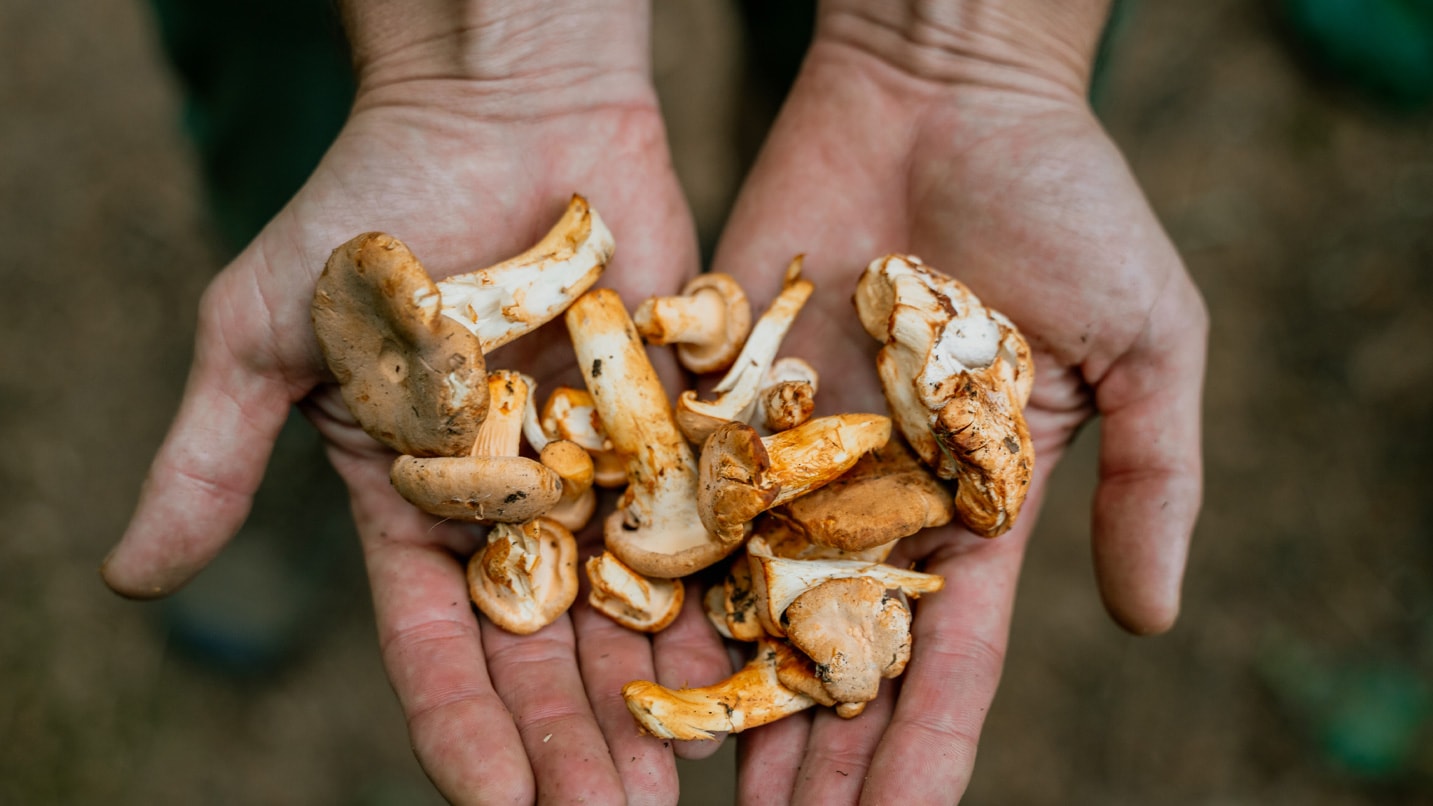
A Bounty of Mushrooms in Oregon
Oregon is home to a wide variety of edible mushrooms that deserve a spot on your dinner plate.
Chanterelles, which range from salmon to orange-colored, are flute-shaped fungi, prized for their meaty texture and sweet, apricot-like flavor. They’re also known as Oregon’s official state mushroom. “Chanterelles have a great identifier: They peel like string cheese,” Rauenhorst says.
One of the best fall-season mushrooms include the American matsutake, which are snow white and large, with a long stipe and flavor sometimes described as cinnamon candy meets dirty socks. Another sought-after mushroom are king boletes, which can grow to eight inches wide or more, with a cap that resembles a hamburger bun and bulbous tan stipe. They’re also found in Europe, including Italy, where they are known as porcini. Cauliflower mushrooms, named for their likeness to the white vegetable, have the texture of cooked egg noodles and are great for soups. Another large specimen, lobster mushrooms, appear in vivid oranges or reds and resemble an otherworldly goblet with the faint scent of seafood.
There’s one popular Oregon mushroom that you’ll see popping up at farmers markets and restaurants in the spring: the morel. These are brown and have a spongy conical appearance, beloved for their nutty, earthy flavor.
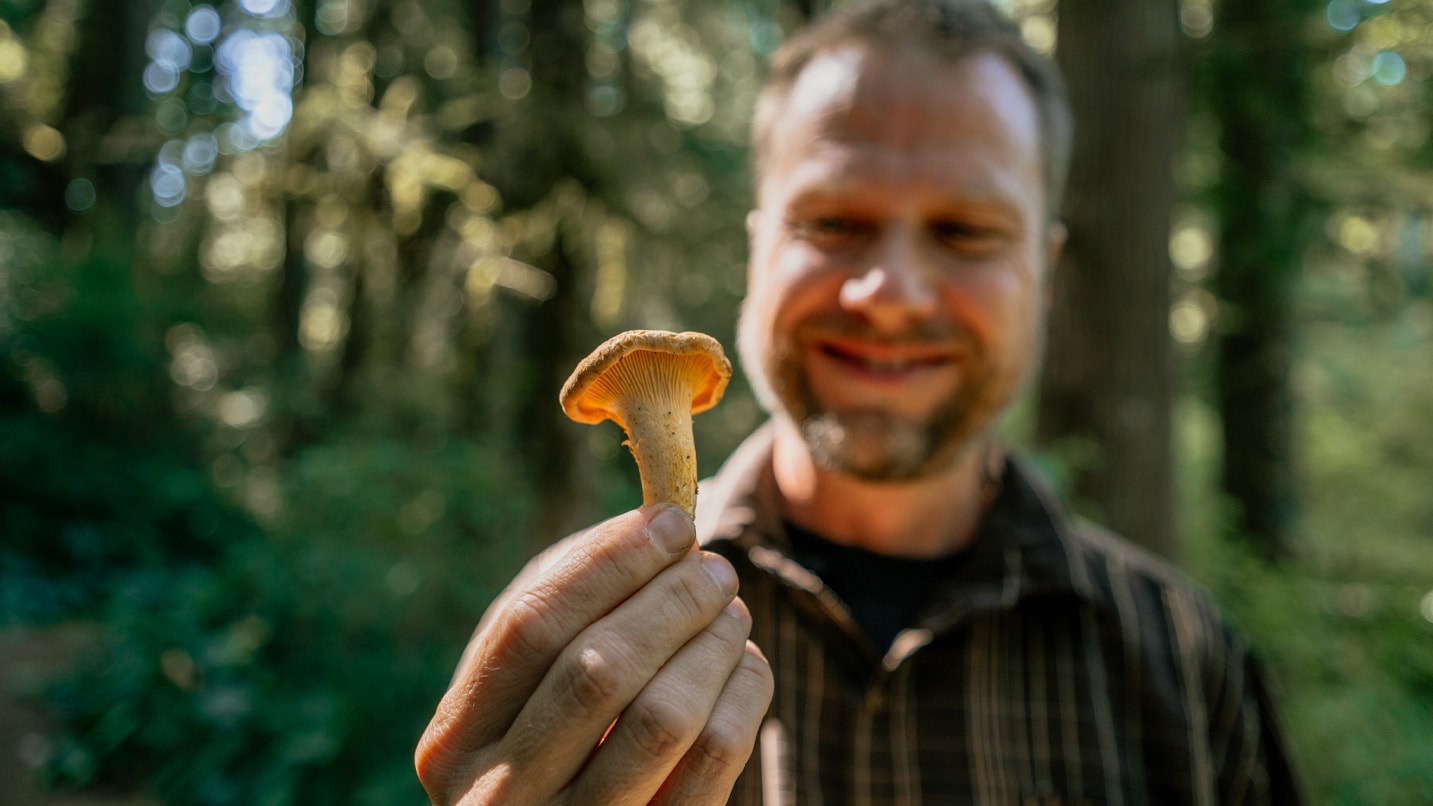
Top Spots for Foraging
The Oregon Coast and the Coast Range are great areas for finding mushrooms, as well as the Cascade Mountains, including the forested areas in the Portland Region, Willamette Valley and Southern Oregon. Mushrooms tend to be found near Douglas firs, cedars and evergreens — which Oregon is flush with — and in rich duff, or forest floor. “Anytime you find soft, spongy ground, you’ll find mushrooms,” Rauenhorst says.
Mushrooms can be found in moist, shadowy areas, so it can be difficult to find even in moments when you’re a few feet away. Look at the base of trees, near tree stumps, and underneath ferns and brush. “You scan left, scan right, you’re ducking and climbing,” Rauenhorst says of mushroom hunting. “This is not for everybody.”
But once you do find one mushroom, stop and scour the region immediately surrounding it, because where you find one, you’re likely to find more.
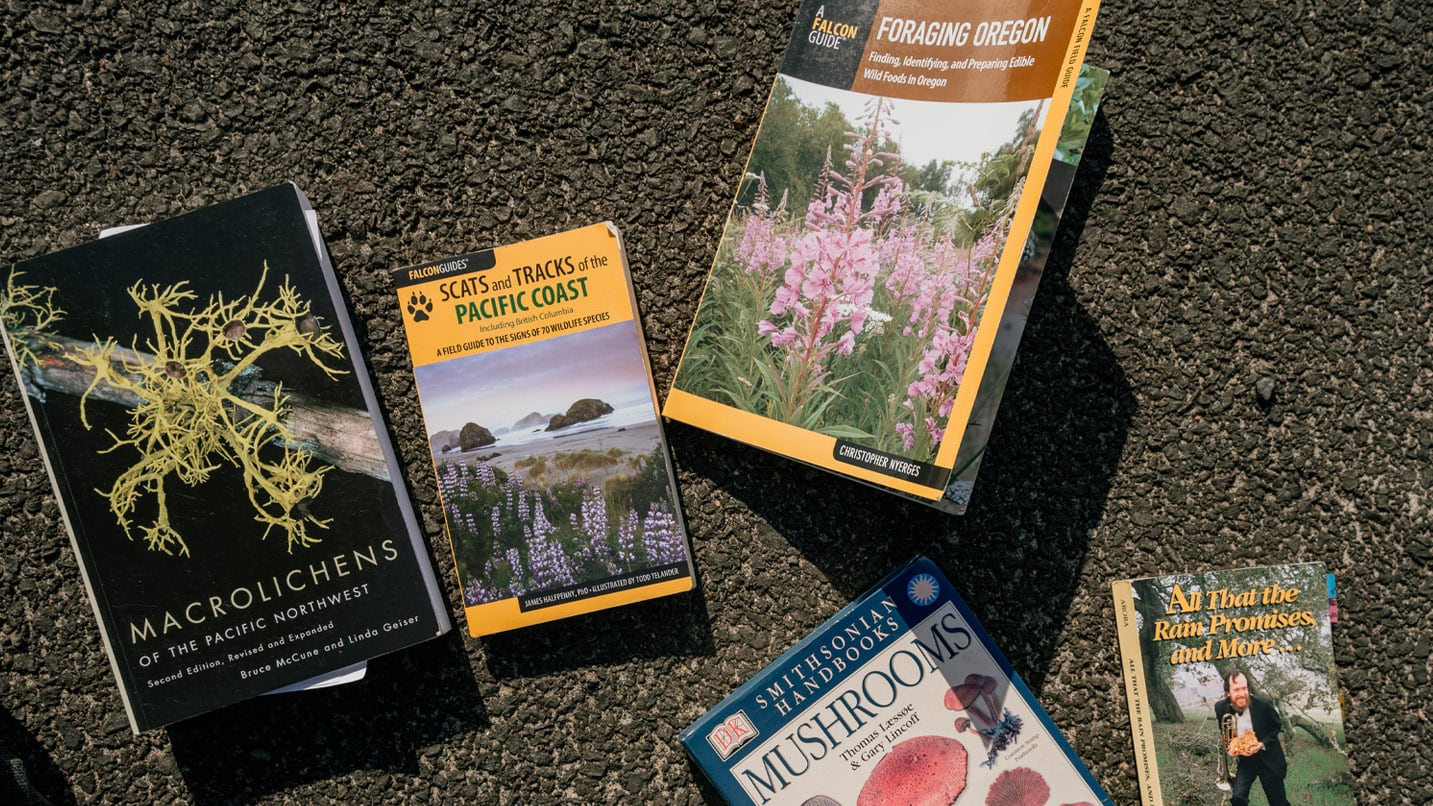
Safety First When Foraging
Walking through a forest with your head down can leave you lost. When you head out mushrooming, be sure to let someone know where you’re going and when to expect you back. Look up from time to time to take inventory of your surroundings, and bring a friend with you. “If I can, I’m going to bring a safety buddy with me,” Rauenhorst says, adding: “The more eyes we have out here, the more mushrooms we’re going to find.”
Do not eat anything you find unless you’re 100% certain that you know what type of mushroom it is. Bring a field guide for reference or wait until you get home to correctly identify the mushroom you’ve found. “If you still don’t know, don’t eat it. It’s just that easy,” Rauenhorst says. There are online resources, such as the Pacific Northwest Mushroom Identification Forum and the Oregon Mycological Society, which has great tips. To celebrate mushrooms among like-minded enthusiasts, check out the Mount Pisgah Mushroom Festival in Eugene.
Other Foraging Tips
- Cook mushrooms you find, as heat destroys toxins within that can make you sick. Oregon authors Kristen and Trent Blizzard of Modern Forager have a great cookbook focusing on all things ‘shroomy, including tips from experienced Oregonian foragers.
- Even if you’re accustomed to spending time in the woods, it’s easy to get disoriented when you’re focused on scanning the ground. It’s a good idea to hike with a buddy.
- Wear bright clothing to alert hunters and others, and bring food, water, a whistle and a GPS app installed on your phone.
- Watch children and dogs, as brightly colored toxic mushrooms may look appealing to eat.
- Know the rules for where and how much you can harvest, including leash laws and permits. Stay on public land.
- Harvest sustainably. Leave some mushrooms for wildlife, and clean mushrooms in the field, leaving dirt and trimmings behind. Use a breathable basket for collection instead of a plastic bag to help spread spores that could lead to more mushrooms.
- Visit a local Forest Service office for more tips about local conditions or join a ranger-led mushroom walk in Oregon’s state parks. Check the Oregon State Parks events calendar for more information.
